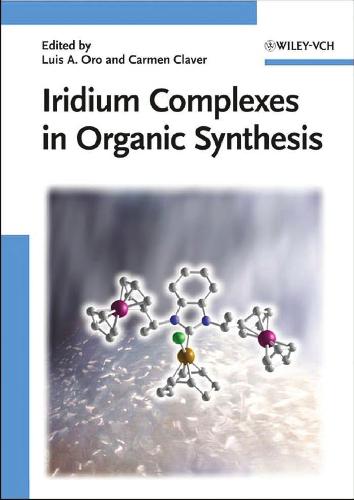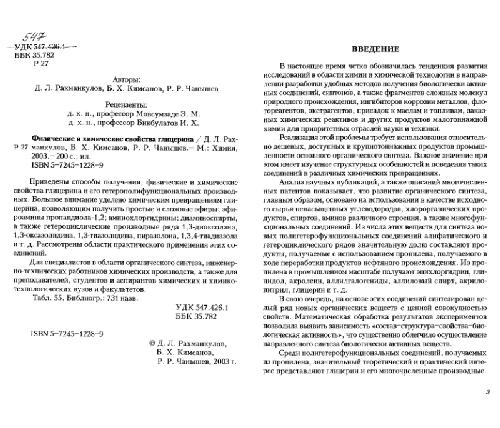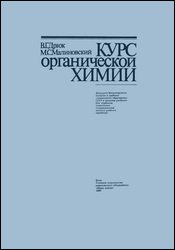Luis A. Oro and Carmen Claver978-3-527-31724-0, 978-3-527-31823-0, 978-3-527-31854-2, 978-3-527-31913-8
Table of contents :
Iridium Complexes in Organic Synthesis……Page 2
Contents……Page 8
Preface……Page 16
List of Contributors……Page 18
1.2.1 Characteristics of the Manufacture of Enantiomerically Pure Products……Page 22
1.2.2 Process Development: Critical Factors for the Application of Catalysts……Page 23
1.2.3.4 Catalytic Performance……Page 24
1.3.1 Catalysts and Scope……Page 25
1.3.2 Industrial Applications……Page 27
1.4.1 Catalysts and Scope……Page 29
1.4.2 Industrial Applications……Page 30
1.5 Miscellaneous Catalytic Applications with Industrial Potential……Page 31
References……Page 34
2.1 Introduction……Page 36
2.2 [Ir(COD)(NCMe)(PR3)]BF4 (PR3 = PiPr3, PMe3) and Related Complexes as Catalyst Precursors: Is 1,5-Cyclo-Octadiene an Innocent and Removable Ligand?……Page 37
2.3 The Dihydrido Iridium Triisopropylphosphine Complex [IrH2(NCMe)3(PiPr3)]BF4 as Alkene Hydrogenation Catalysts……Page 42
2.4 The Dihydrido Iridium Triisopropylphosphine Complex [IrH2(NCMe)3(PiPr3)]BF4 as Alkyne Hydrogenation Catalysts……Page 47
2.5 Dihydrido Arene Iridium Triisopropylphosphine Complexes……Page 50
2.6 Dihydrido Iridium Triisopropylphosphine Complexes as Imine Hydrogenation Catalysts……Page 55
References……Page 58
3.1 Introduction……Page 60
3.2.1 Mono-NHC s and Intramolecular C—H Activation……Page 61
3.2.2 Chelating bis-NHC s……Page 64
3.2.3 Abnormal NHCs……Page 67
3.3 Catalysis with Ir—NHC s……Page 70
References……Page 73
4.2 Homogeneous C=O Hydrogenations……Page 76
4.2.1 Chemoselective Hydrogenations……Page 77
4.2.2 Enantioselective Hydrogenations……Page 84
4.2.3 Transfer Hydrogenation (TH)……Page 90
4.2.4 Asymmetric Transfer Hydrogenation (ATH)……Page 102
4.3 Heterogeneous, Supported and Biocatalytic Hydrogenations……Page 120
References……Page 124
5.1 Introduction……Page 128
5.2 Hydrogen Transfer Oxidation of Alcohols (Oppenauer-Type Oxidation)……Page 129
5.3.1 Transfer Hydrogenation of Quinolines……Page 133
5.4.1 Asymmetric Transfer Hydrogenation of Ketones……Page 134
5.4.2 Dynamic Kinetic Resolution……Page 139
5.5 Hydrogen Transfer Reactions in Aqueous Media……Page 140
5.6.1 N-Alkylation of Amines with Alcohols……Page 144
5.6.2 Cyclization of Amino Alcohols……Page 147
5.6.3 Cyclization of Primary Amines with Diols……Page 148
5.6.4 Amidation of Alcohols with Hydroxylamine……Page 149
5.7.1 β-Alkylation of Secondary Alcohols……Page 151
5.7.2 Alkylation of Active Methylene Compounds with Alcohols……Page 152
5.8.1 Oxidative Lactonization of Diols……Page 156
5.8.2 Inter-and Intra-Molecular Tishchenko Reactions……Page 158
5.9 Dehydrogenative Oxidation of Alcohols……Page 159
References……Page 161
6.1 Introduction……Page 166
6.2.2 The Ir(I)/ZnCl 2/Aniline/Norbornene System……Page 167
6.2.3 The Chiral Ir(I)/‘Naked Fluoride’/Norbornene/Aniline System……Page 168
6.2.4 The Chiral I r(I)/Organic Base/Anilines/Olefins System……Page 171
6.2.5 The Ir(I)/Piperidine/Methacrylonitrile System……Page 172
6.3.1 Intramolecualar Aliphatic Systems……Page 173
6.3.3 Intermolecular Alkyne Hydroamination……Page 174
6.4.1 Olefin Hydroamination……Page 177
6.4.2 Alkyne Hydroamination……Page 179
6.5.1 Ir(I)–Amine Complexes……Page 181
6.5.2 Ir(I)-Anilido Complexes……Page 182
6.5.3 N-H Bond Activation Leading to Ir(III)–Amido-Hydrido Complexes……Page 183
6.5.4 Alkyl–Amino-Hydrido Complexes of Ir(III)……Page 186
6.5.5 Iridium–Fluoride Complexes……Page 189
6.6 Conclusions……Page 190
References……Page 191
7.2 Iridium–Boryl Complexes……Page 194
7.3 Hydroboration……Page 197
7.4 Diboration……Page 205
7.5 Borylation……Page 206
References……Page 212
8.1 Introduction……Page 216
8.2.1 The Monsanto Process……Page 218
8.2.2 The Celanese Process……Page 220
8.3 Iridium Reactivity in the Methanol Carbonylation Reaction……Page 221
8.4 The Iridium-Based Cativa Process……Page 225
8.5 The Iridium–Platinum-Based Process……Page 227
Acknowledgments……Page 228
References……Page 229
9.1 Introduction……Page 232
9.2.1 Reactivity and Regioselectivity……Page 233
9.2.2 Steric Course……Page 235
9.2.3 Asymmetric Catalysis: The Beginnings with Phosphinooxazolines as Chiral Ligands……Page 236
9.2.4.1 Survey……Page 237
9.2.4.2 Catalyst Preparation, Reaction Conditions and Catalytic Cycle……Page 238
9.2.4.4 Variation of the Phosphoramidite Ligands……Page 240
9.2.4.5 Further Ligands Used in Ir-Catalyzed Allylic Substitutions……Page 241
9.3.1.1 Malonates and Related Pronucleophiles……Page 242
9.3.2 Aliphatic Nitro Compounds as Pronucleophiles……Page 245
9.3.2.1 A Glycine Equivalent as Pronucleophile……Page 246
9.3.3.1 Ketone Enolates Derived from Silyl Enol Ethers as Nucleophiles……Page 247
9.3.3.3 Decarboxylative Allylic Alkylation……Page 248
9.3.3.4 Reactions with Aryl Zinc Compounds……Page 249
9.4.1 Inter-and Intramolecular Reactions with Aliphatic Amines and Ammonia as Nucleophiles……Page 250
9.4.3 Amination of Allylic Alcohols……Page 253
9.4.4 Pronucleophiles Serving as Ammonia Surrogates: N,N-Diacylamines, Trifluuoroacetamide and N-Sulfonylamines……Page 254
9.4.5 Decarboxylative Allylic Amidation……Page 257
9.4.6 Dihydropyrroles and γ-Lactams via Allylic Substitution and Ring-Closing Metathesis……Page 258
9.4.7 Hydroxylamine Derivatives as N-Nucleophiles……Page 259
9.5.1 Phenolates as Nucleophiles……Page 260
9.5.2 Alkoxides as Nucleophiles……Page 262
9.5.4 Silanolates as Nucleophiles……Page 263
9.6 Synthesis of Biologically Active Compounds via Allylic Substitution……Page 265
9.7 Conclusions……Page 267
References……Page 268
10.2 Iridium-Catalyzed Dimerization and Cyclotrimerization of Alkynes……Page 272
10.3 Iridium-Catalyzed, Three-Component Coupling Reactions of Aldehydes, Amines and Alkynes……Page 274
10.4 Head-to-Tail Dimerization of Acrylates……Page 277
10.5 A Novel Synthesis of Vinyl Ethers via an Unusual Exchange Reaction……Page 279
10.6 Iridium-Catalyzed Allylic Substitution……Page 281
10.7 Alkylation of Ketones with Alcohols……Page 283
10.8 N-Alkylation of Amines……Page 285
10.10 Iridium-Catalyzed Addition of Water and Alcohols to Terminal Alkynes……Page 287
10.12 Iridium-Catalyzed Anti-Markovnikov Olefin Arylation……Page 288
10.13 Iridium-Catalyzed Silylation and Borylation of Aromatic C—H Bonds……Page 289
10.14 Miscellaneous Reactions Catalyzed by Iridium Complexes……Page 290
References……Page 292
11.1 Introduction……Page 298
11.2 [2+2+2] Cycloaddition……Page 299
11.3 Enantioselective [2+2+2] Cycloaddition……Page 302
11.4 [2+2+1] Cycloaddition……Page 304
11.5 [4+2] and [5+1] Cycloadditions……Page 309
11.6 Cycloisomerization……Page 310
11.7 Ir(III)-Catalyzed Cyclizations……Page 312
11.8 Miscellaneous Cycloadditions……Page 314
11.9 Conclusions……Page 316
References……Page 317
12.1 Introduction……Page 320
12.2.1 Scope of the Reaction……Page 321
12.2.2 Mechanistic Considerations……Page 323
12.2.3 Catalyst Optimization……Page 328
12.2.4.1 Alkane Metathesis……Page 330
12.2.4.2 Polymer Functionalization……Page 331
12.3 Arene C(sp2)—H and Alkyne C(sp1)—H Bond Activation……Page 332
12.3.1 Activation of C(sp2)—H Bonds……Page 333
12.3.2 Activation of C(sp1)—H Bonds……Page 336
12.4.1 Activation of Carbon–Halogen Bonds……Page 338
12.4.3 Activation of Carbon–Carbon Bonds……Page 339
12.5 Ammonia Borane Dehydrogenation……Page 340
References……Page 342
13.1 Introduction……Page 346
13.1.1 The Beginning……Page 347
13.2 Alkane C—H Activation with Ir Derivatives……Page 348
13.3 Alkane Dehydrogenation with Ir Complexes……Page 349
13.4.1 Ir-PCP Pincer Compounds……Page 354
13.4.2 Ir-POCOP Pincer Compounds……Page 357
References……Page 363
14.1 Introduction……Page 366
14.2.1 Hydrosilylation and Dehydrogenative Silylation of Alkenes……Page 367
14.2.2 Application of Hydrosilylation in Polymer Chemistry……Page 369
14.2.3 Hydrosilylation and Dehydrogenative Silylation of Alkynes……Page 370
14.3 Asymmetric Hydrosilylation of Ketones and Imines……Page 373
14.4.1 Hydroformylation of Vinylsilanes……Page 377
14.4.2 Silylcarbonylation of Alkenes and Alkynes……Page 378
14.5 Silylation of Aromatic Carbon–Hydrogen Bonds……Page 380
14.6 Silylation of Alkenes with Vinylsilanes……Page 381
14.8 Isomerization of Silyl Olefins……Page 382
14.9 Addition of Silylacetylenes =C–H Bond into Imines……Page 383
14.10 Conclusions……Page 385
References……Page 386
15.2.1 Polyoxoanions……Page 390
15.2.2 Surfactants……Page 391
15.2.3 Imidazolium Ionic Liquids……Page 393
15.3 Kinetic Studies of Iridium Nanoparticle Formation: The Autocatalytic Mechanism……Page 398
15.4 Catalytic Applications of Soluble Iridium Nanoparticles……Page 401
15.5 Conclusions……Page 408
References……Page 409
Index……Page 412







Reviews
There are no reviews yet.